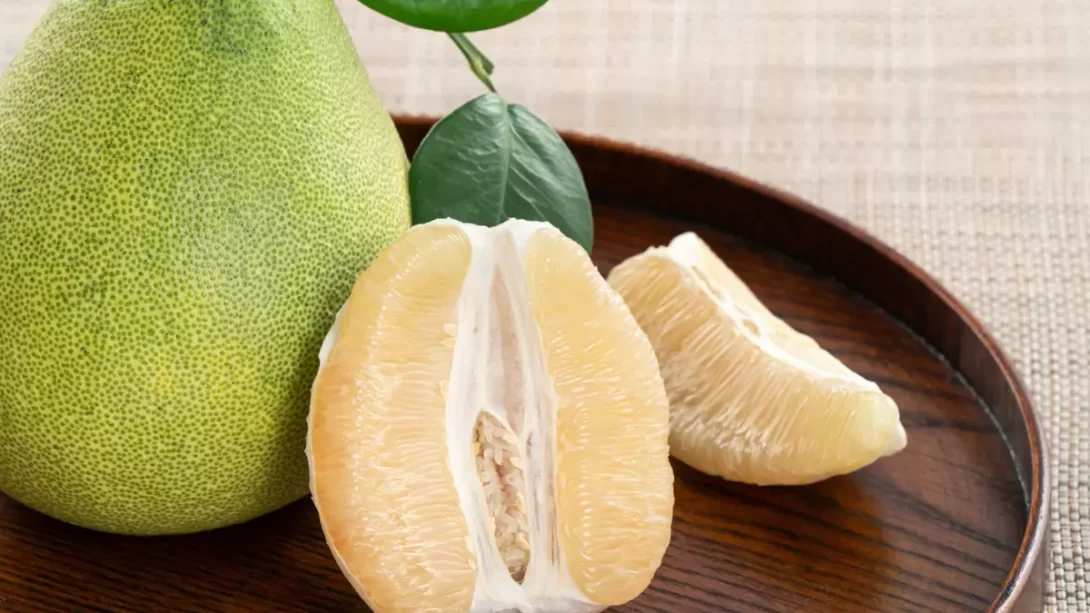The pomelo, a large, exotic citrus fruit, is known for its sweet and tangy flavor. Originating in Southeast Asia, it’s similar to grapefruit but milder and less bitter. Identifying when a pomelo is ripe is key to enjoying its unique taste and texture. This article will guide you through various signs to look for to ensure you pick or purchase a pomelo at its peak ripeness.
Physical Characteristics of a Ripe Pomelo
A ripe pomelo typically reaches a considerable size, larger than grapefruits, and has a round or pear-like shape. The skin color of a ripe pomelo can vary greatly depending on the variety, ranging from green to yellowish-pink. Don’t rely solely on color, as some pomelos remain green even when ripe. The skin of the ripe fruit is thick and puffy, often with a slightly bumpy texture. As it ripens, the pomelo’s skin may start to feel slightly softer but should not be overly soft or mushy.
Weight and Feel
The weight of a pomelo can be a good indicator of its ripeness and juiciness. A ripe pomelo should feel heavy for its size, suggesting a high juice content. When gently squeezed, it should yield slightly under pressure but still feel firm. Avoid fruits that feel overly hard or, conversely, too soft and squishy, as this can indicate under- or over-ripeness, respectively.
Aroma Test
Scent is a powerful indicator of the ripeness of many fruits, including pomelos. A ripe pomelo will emit a sweet, citrusy aroma, especially around the stem end. The stronger and more pleasant the fragrance, the more likely the pomelo is ripe and ready to eat. If there’s little to no smell, the fruit might need more time to ripen.
Stem and Skin Condition
The stem end of the pomelo provides valuable clues about its ripeness. A ripe pomelo will often have a stem that appears slightly dried out or withered. This is a natural sign that the fruit has matured on the tree and is ready for consumption. Additionally, the skin around the stem may begin to soften slightly, although the overall skin should remain relatively firm.
Examine the skin for any signs of excessive aging or spoilage, such as deep discolorations, cuts, or mold. While minor surface blemishes are normal, significant imperfections may indicate that the fruit is past its prime or has been damaged.
Taste Test (If Possible)
If you have the opportunity to taste a pomelo before purchasing (as may be the case at some farmers’ markets or specialty stores), it can be a definitive way to judge ripeness. A ripe pomelo should taste sweet with a slightly tangy and bitter undertone. The flesh should be juicy and tender but not overly soft. Astringency or a lack of sweetness indicates that the fruit is not yet ripe.
Storage and Ripening at Home
Pomelos can continue to ripen after being harvested, so if you’ve brought home a fruit that’s not quite ripe, there are ways to encourage the process. Store unripe pomelos at room temperature in a well-ventilated area. They can take several days to a week to ripen fully. To slow down the ripening process or to store ripe pomelos, place them in the refrigerator where they can be kept fresh for several weeks.
Conclusion
Identifying a ripe pomelo involves observing a combination of physical characteristics and sensory cues. Look for a fruit that is large, heavy for its size, and has slightly soft skin, particularly around the stem end. The aroma should be sweet and citrusy, emanating from the stem end. For the most direct assessment, a taste test can reveal the perfect balance of sweetness and tanginess indicative of ripeness.
If your pomelo isn’t quite ripe when you bring it home, remember that it can ripen at room temperature over several days. Once ripe, it can be stored in the refrigerator to extend its shelf life. Whether you enjoy it fresh, in salads, or as part of a dessert, a ripe pomelo offers a delightful and refreshing experience.
By understanding these signs and knowing how to store your pomelo properly, you can ensure that you enjoy this exotic fruit at its best. So next time you come across a pomelo in your local market, feel confident in selecting one that will provide a delicious and nutritious addition to your fruit selection.



